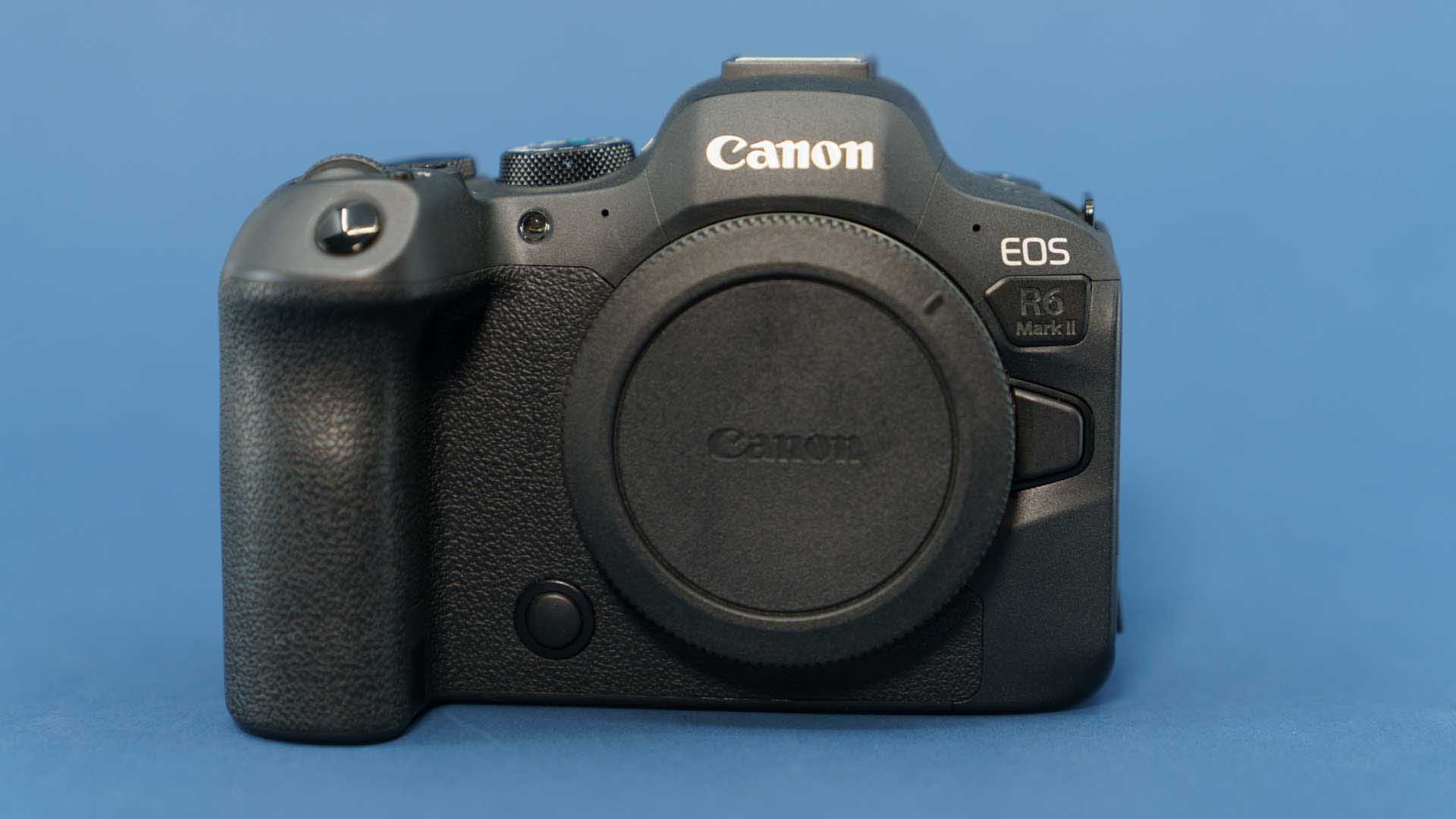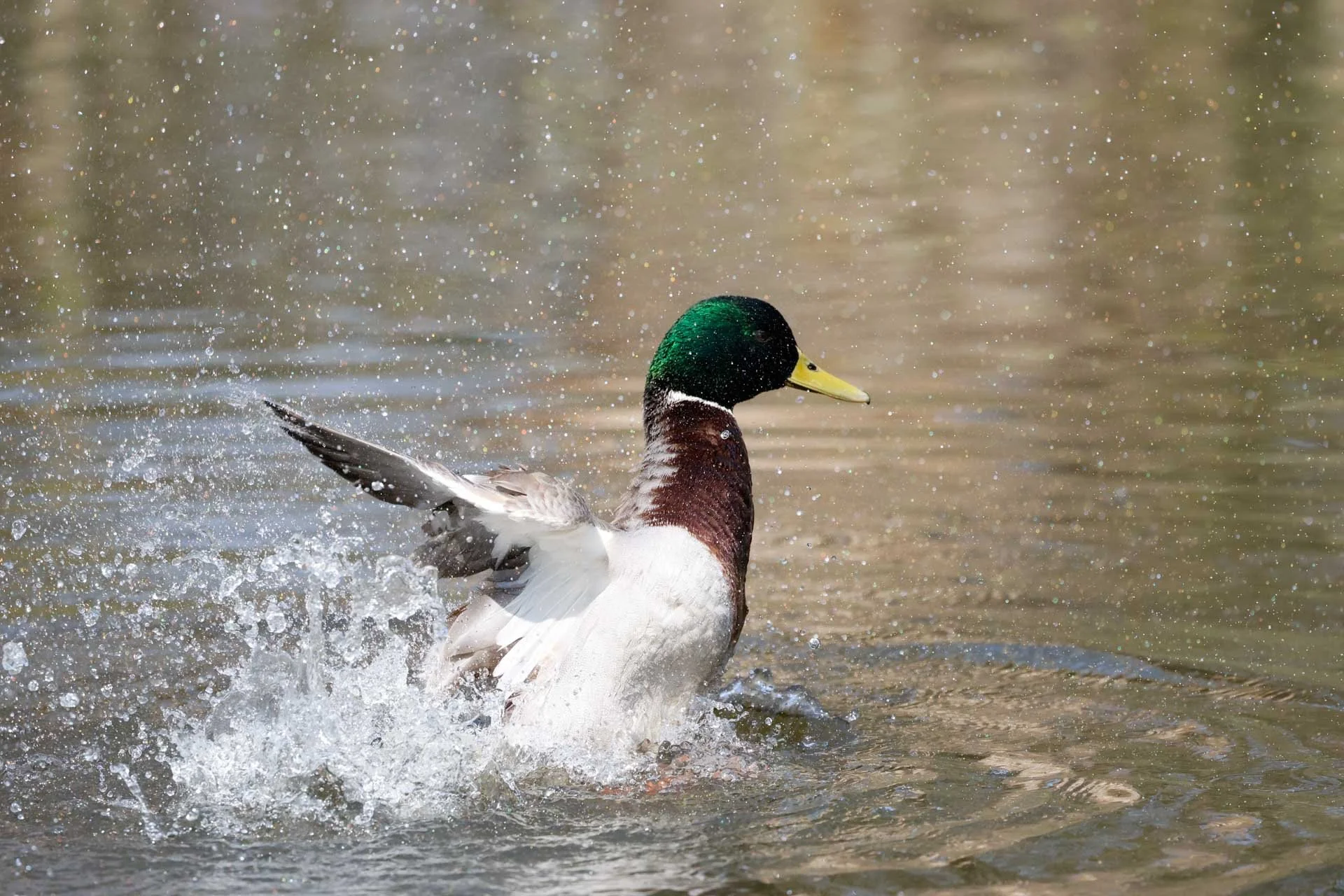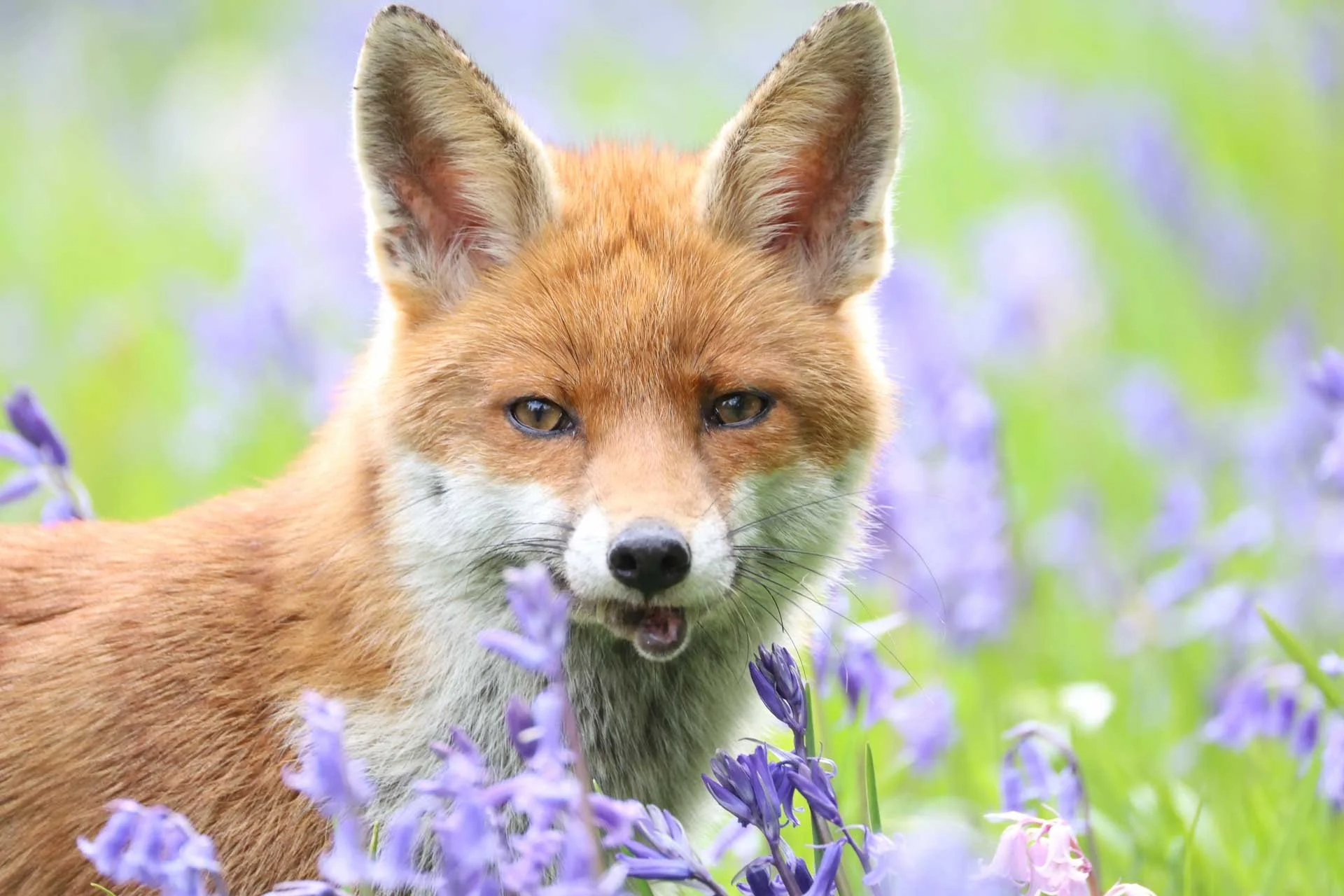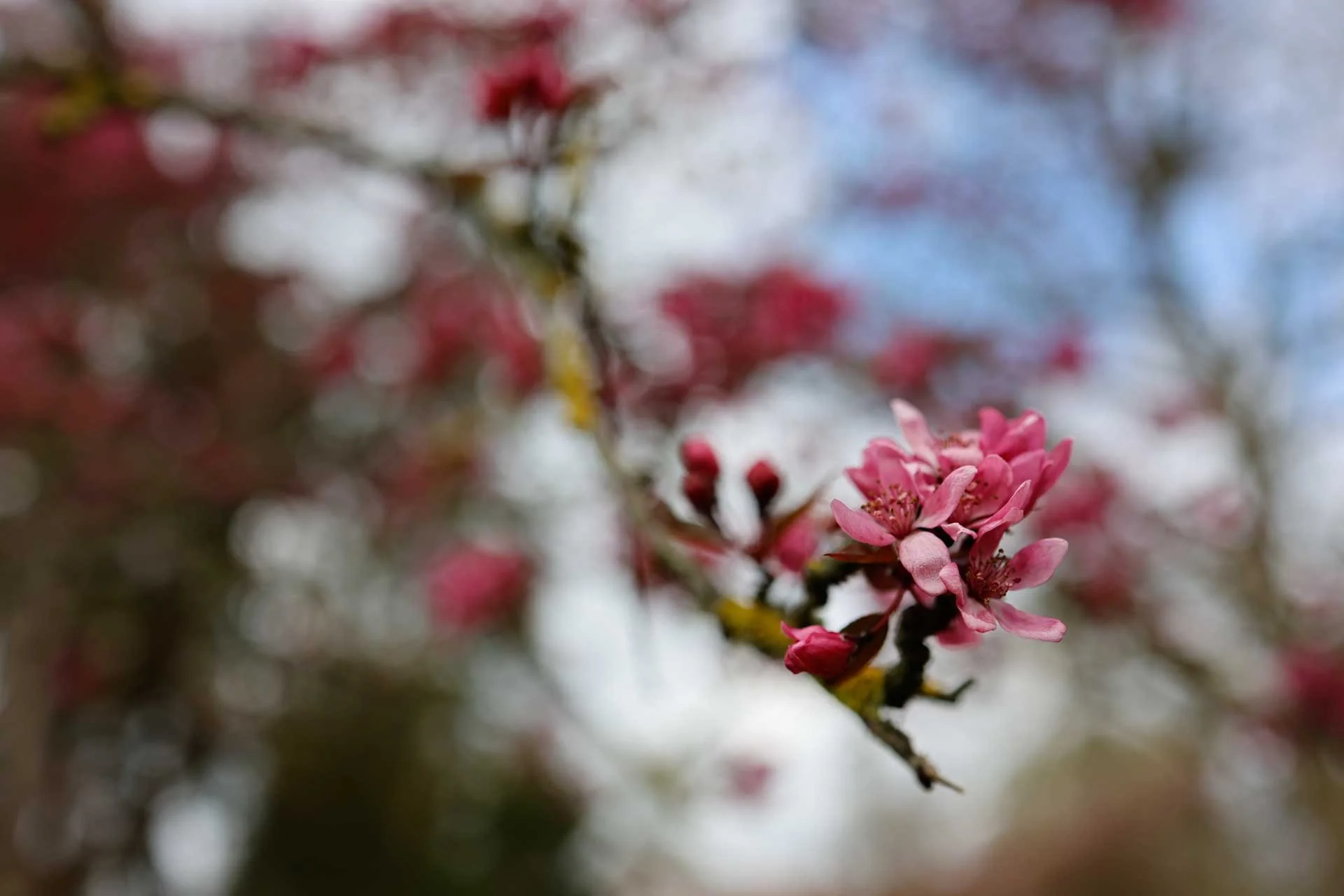Canon EOS R6 Mark II Review
Summary Verdict
Thanks to its upgraded features and performance compared with its predecessor, the Canon EOS R6 II is likely to encourage more photographers to move from DSLRs to a mirrorless camera system. With a resolution of 24.2MP, the R6 II not only offers better detail than the R6 but also excellent noise handling and enhanced autofocus and video capabilities, making it a solid choice for various photographic needs. Though not inconsiderable, the R6 II’s price is also attractive compared to the Canon EOS R5’s. Read on to discover more about why the Canon EOS R6 Mark II won the SheClicks Enthusiast Camera of the Year 2024 Award.
Score: 4.5/5
For
24-million-pixel full-frame sensor
Excellent subject detection AF
4K video oversampled from 6K
Against
Not the same control layout as the R5 and R3
Sensor not stacked or BSI
Read our Canon RF 24mm f/1.8 Macro IS STM Review
What is the Canon EOS R6 Mark II?
The Canon EOS R6 Mark II is a full-frame mirrorless camera with the Canon RF lens mount. It was announced on 2nd of November 2022 and builds on the 20MP Canon EOS R6, which was announced in July 2020 along with the 45MP Canon EOS R5. The R5 and R6 cameras caught the attention of many photographers and accelerated Canon's shift towards mirrorless technology. The Canon R6 II introduces several enhancements over the original Canon R6, including a 20% increase in sensor resolution, a faster processor and improved subject detection for better autofocus performance.
Read our Canon EOS R5 Mark II Review
Canon EOS R6 Mark II Price
$1,999 / £1,999 body-only
$2,299 / £2,349 with 24-105mm f/4-7.1 lens
$3,099 / £3,019 with 24-105mm f/4 lens
Canon EOS R6 Mark II Specifications
Camera Type: Mirrorless
Announced: 2nd November 2022
Sensor: 24.2MP Full-frame Dual Pixel CMOS AF II
Processor: Digic X
Lens mount: RF
Sensitivity range: Stills: ISO 100-102,400 expandable to ISO 50-204,801, Video: ISO 100-25,600 expandable to ISO 204,801
File formats: Raw + Jpeg/HEIF, MP4 H.264/H.265
Continuous shooting rate: Mechanical shutter: 12fps for 1000+ Jpeg or 110 raw or 1000 CRAW images, Electronic shutter: 40fps for 190 Jpeg or 75 raw or 140 CRAW images, or 20fps, 5fps all with AF tracking
Maximum video resolution: 4K (3840 x 2160) up to 60fps, Full HD (1920 x 1090) at up to 120fps
Autofocus system: Dual Pixel CMOS AF II phase detection with 100% coverage
Viewfinder: 0.5-inch 3.69million-dot OLED electronic viewfinder with 120fps refresh rate
Screen: 3-inch 1.62-million dot vari-angle touchscreen
Autofocus: Dual Pixel CMOS AF II with Advanced Animal AF (recognising dogs, cats and birds) supported in all video modes with 100% coverage and up to 1053 ‘AF segments’
Stabilisation: In-body image stabilisation (IBIS) that works with lens IS and enables up to 8-stops of shutter speed compensation
Storage: Dual slots, 2x SDXC UHS-II
Dimensions: 138.4 x 98.4 x 88.4mm
Weight: 588g / 670 g with card and battery
The Canon EOS R6 Mark II has a vari-angle touchscreen that is useful for composing images from awkward angles in landscape or portrait orientation.
Features
The Canon EOS R6 Mark II features a 24.2MP full-frame Dual Pixel CMOS AF II sensor. Consequently, it makes a significant update on the Canon R6 through enhanced resolution, albeit without adopting backside-illuminated (BSI) or stacked technologies, but keeping the price within a competitive range. It’s also equipped with a refreshed version of the Digic X processor that’s found in the R6, R5 and the top-end Canon EOS R3. This combination allows for rapid continuous shooting rates up to 40 frames per second with autofocus and tracking with the electronic shutter and 12 frames per second with the mechanical shutter.
Wildlife photographers, and bird photographers in particular, may appreciate the 30fps Raw burst mode with Pre-shooting. When this is activated, the camera buffers images when the shutter button is half-pressed. It then saves up to half a second’s worth of the imags of the buffer when the shutter button is fully pressed. Essentially, it means that you’re able to capture 15 images from immediately before the shutter was pressed home. That great for capturing things like a bird taking off.
Impressively, the Canon R6 II can shoot at 40fps for up to 75 raw files or 190 large Jpeg images. That’s useful for photographing unpredictable action, such as birds in flight or sport, but if that rate is more than you need, it can be dropped to 20fps or 5fps.
Although using the mechanical shutter reduces the maximum shooting rate to 12fps, that speed can be maintained for over 1000 Jpegs, 110 raw files or 1000 CRAW files. There are times when it might be useful to have an extended shooting time rather than the super-high frame rate.
By default, the camera covers an ISO range of 100-102,400 for stills, which can be expanded up to ISO 204,801 for very low light conditions. For video, the standard ISO range stretches from ISO 100 to 25,600 and is also expandable to ISO 204,801.
There’s a decent amount of space on the back of the Canon R6 II for your thumb and all the controls on the right side of the body are within easy reach from the thumb rest.
While the original Canon R6’s autofocus performance is very good, the EOS R6 II takes a step up thanks to the Dual Pixel CMOS AF II system inherited from the R3, Canon’s most advanced mirrorless camera to date. It has been fine-tuned with deep learning algorithms to enhance the Subject detection and Eye Detection, with the latter now working in any focus mode and with any focus area. The list of detectable subjects is also expanded to include ‘planes and trains in the ‘Vehicle’ section, while the ‘Animal’ list includes horses (and zebras). That makes the complete list: Humans, Animals (Dogs, Cats, Birds and Horses), Vehicles (Racing cars or Motor bikes, Aircraft and Trains). In addition, there’s an ‘Auto’ subject detection mode that sets the camera to look for any of the subjects in its detection list.
Thanks to the R6 II’s updated eye tracking, you can specify whether the camera should prioritise the left or right eye for focusing. The camera uses a hierarchal approach to focusing, which means that if the eyes and face aren’t detectable, it will track the head, and if that’s not visible, it will track the person’s body.
Canon introduced a new Face only AF option with the EOS R6 Mark II which sets the camera to not shift the focus to the background if the face leaves the frame. But when the subject re-enters the frame, the camera tracks the person again. That proved useful when photographing dancers during Canon’s press briefing about the camera and could be a bonus for event photographers.
Something that could prove popular with some landscape and macro photographers is the Canon EOS R6 II’s Focus bracketing feature that can composite the images in-camera. And for multi-exposure fans, there’s a Jpeg-only multiple exposure mode that can combine up to 9 shots.
Like the APS-C format Canon R7, the R6 II has a Panorama mode that can combine images in-camera.
No modern digital camera is complete without in-body image stabilisation (IBIS), and the Canon R6 II’s IBIS is claimed to deliver up to 8 EVs of shutter speed compensation with some stabilised lenses.
For storage, the EOS R6 Mark II has dual SDXC UHS-II card slots, ensuring ample storage capacity and easy back-up. Its connectivity options are also up-to-date with Bluetooth 5.0 and Wi-Fi, enabling file transfers and remote camera control using Canon’s free Camera Connect and EOS Utility apps.
As its a mirrorless camera, the EOS R6 II has Canon RF lens mount.
Canon EOS R6 Mark II Video Features
The Canon EOS R6 Mark II brings significant advancements in video recording capabilities compared to its predecessor, the R6. Notably, the previous model's 1.52x crop on 4K video recording at 60p is eliminated in the R6 Mark II, which now uses the entire sensor width. That’s good news for videographers looking to create more dynamic footage with wide-angle compositions.
In addition, the R6 Mark II can capture Full HD footage at an impressive 179.82 frames per second, perfect for those aiming to create high-quality slow-motion sequences. The quality of 4K video is further improved by oversampling from a 6K output, ensuring superior image clarity and detail in every frame.
Canon has also improved the R6 Mark II's functionality with extended recording times. The camera's redesigned circuitry removes the previous 30-minute limit, allowing for continuous recording of oversampled 4K video at 60p for over 40 minutes, and up to six hours at 30p, power and storage limits permitting. This makes the R6 Mark II a more versatile tool for longer shoots or event coverage.
For videographers requiring even higher resolution, the R6 Mark II offers the ability to output 6K raw video via HDMI to an external recorder like the Atomos Ninja V+, providing extensive flexibility in post-production.
The camera also has a video pre-recording feature that streams footage in standby mode, capturing crucial moments by recording clips from three to five seconds before the record button is pressed. Again, that’s particularly useful in unpredictable action situations.
Canon has incorporated a 'False Colour' feature to assist with exposure setting selection during filming. This tool uses six colours to represent the brightness levels across a scene, making it easy to assess exposure at a glance. Additionally, the camera supports PQ and Canon Log 3 recording, enabling greater detail and dynamic range.
Focus breathing correction is another key feature that is supported by several Canon RF lenses via firmware updates. This function stabilises the framing as the focus distance changes, maintaining consistent composition during shooting. It means that the lens doesn’t appear to zoom in our out as the focus moves from one extreme to the other. Compatible lenses include several from Canon's RF lineup, such as the RF 14-35mm F4 L IS USM, RF 15-35mm F2.8 L IS USM, and others.
With dimensions of 138.4 x 98.4 x 88.4mm and weighing 588g (body only), the full-frame Canon R6 II is smaller in two dimensions and lighter than the APS-C format Canon 90D (140.7 x 104.8 x 76.8mm and 701g).
Build and Handling
The Canon EOS R6 Mark II closely mirrors the design and appearance of its predecessor but at the same time makes some nuanced changes to its handling and control layout. Nevertheless, the R6 II retains the robustness of the original R6, with a durable magnesium alloy chassis and a high level of weather sealing, which is good to know in ‘challenging’ weather conditions. Despite these similarities, the R6 Mark II is slightly lighter, weighing in at 588 grams, including the battery and card.
The eye sensor beneath the viewfinder detects when the camera is held to your eye to swithc between the viewfinder and screen.
Like the R6, the Canon EOS R6 Mark II has a high-quality electronic viewfinder and touchscreen. The viewfinder is a 0.5-inch type with 3.69 million dots, providing a crisp and clear view with a high refresh rate of 120fps, which is particularly useful for tracking fast-moving subjects. The resolution, while lower than that of the R5's viewfinder, still enables a detailed view and precise composition and framing in a wide range of lighting conditions.
Meanwhile, the R6 II’s touchscreen is a 3-inch panel with 1.62 million dots, mounted on a vari-angle hinge. This versatile setup allows the screen to be tilted and rotated to almost any angle, facilitating high and low-angle shots in portrait or landscape orientation that would be challenging with a fixed screen. It also allows the screen to be flipped round to face forwards for selfie-shooting and vlogging.
Furthermore, the touchscreen functionality is comprehensive, allowing for intuitive settings adjustments and quick menu navigation. Despite the ease of control via the touchscreen, many photographers will appreciate the physical buttons and dials on the camera settings.
As we’ve come to expect, the viewfinder and rear screen of the camera offer a good match to the image that is captured. This means that you can use the evidence of your eyes when setting the exposure, white balance and colour.
The Canon R6 Mark II has a deep grip that feels comfortable in your hand. The switch on the left of the top-plate alows you to switch quickly between stills and video recording.
Canon EOS R6 Mark II Control Layout
Compared with the R6, Canon has introduced a new power switch next to the rear control dial on the top of the camera. This frees up space on the left side of the top plate, which now has a stills/video mode selector (see the image above). Consequently, photographers and videographers can switch between modes without the need to navigate through the menu or rotate the exposure mode dial, streamlining the shooting process and reducing setup time. This change particularly benefits users who frequently alternate between capturing stills and video, providing a quick and seamless transition.
The large control dial on the back of the camera, and the payback button (under my thumb) with the delete button to its left, are also easy to reach.
As with the original R6, the EOS R6 Mark II features an exposure mode dial that distinguishes it from the (more advanced) R5, which uses a mode button and dial arrangement. The direct access via a single dial makes the R6 II quicker and more intuitive to use than the R5, especially for those who appreciate straightforward controls rather than dual control use.
Overall, the build and handling of the Canon EOS R6 Mark II is very good. The camera feels robust and key features are within easy reach either via a physical control or the touchscreen. I have average size hands for a woman, and I find the R6 II comfortable to hold and use. The buttons and dials are nicely spaced and not too small or fiddly.
The joystick on the back of the Canon R6 II is within easy reach when my hand on the grip and my finger is on the shutter reales.
Performance
The Canon EOS R6 Mark II performs well in a wide range of conditions. Its updated sensor and processing engine pull off a winning combination of high-speed shooting and great image quality in many situations. Consequently, users can expect images to have vibrant colours and pleasing tones, with the auto white balance system tending to produce slightly warm results that generally appeal in most lighting conditions. Meanwhile, the evaluative metering system does a great job of balancing the exposure across the frame and prioritising the subject.
Canon EOS R6 Mark II Autofocus Performance
The Canon R6 II autofocus system, powered by the Dual Pixel CMOS AF II technology, excels in low-light conditions. It’s sensitive down to -6.5EV, which means it’s capable of finding and locking onto eyes, faces, and heads, even in challenging lighting. The autofocus system is also impressively responsive and accurate, and is adept at tracking fast-moving subjects whether in stills or video mode.
I found the Eye detection operates seamlessly across all focus modes and focus areas. It’s quick to spot a subject entering the frame, with the hierarchical subject recognition doing its job. In most instances, it makes photographing birds and wildlife much easier than we traditionally expect. Naturally, there are a few occasions when it doesn’t get it entirely right when left to its own devices. For example, I discovered it sometimes latched onto the water splash created by a duck flapping about on water rather than the duck itself.
Canon EOS R6 Mark II Image Quality
The Canon EOS R6 Mark II’s 24.2MP sensor marks a significant improvement in resolution over its predecessor while still catering well to demands for good noise control. The results at high ISO settings are well-managed, with the camera producing clear, detailed images even at ISO 12,800. The in-camera noise reduction ensures that the ISO 12,800 JPEGs are clean and detailed, while the raw files retain more detail with acceptable levels of noise. This makes the R6 Mark II a strong contender for those who often shoot in low light or require the flexibility to adjust exposure in post-processing.
Canon has also incorporated Focus bracketing with Depth composite in the R6 II, which is designed for creating sharp images with a deep depth of field when the camera is mounted on a tripod. This feature allows for between 2 and 999 images to be captured in a sequence with the focus point changing between each and with in-camera or post-capture blending. Even with the Depth composite (blending) option activated, the source images are recorded along with the composited image.
Focus stckingting is especially useful in macro and landscape photography, where controlling the focus across a scene is critical. Although it’s recommended to use a tripod, I was able to get some handheld shots sharp when stacking in-camera.
As with images from the R6, I find that underexposed images (or areas of images) from the R6 II can withstand brightening by around 3 to 4EV. Pushing the brightening beyond that introduces noise, even in low-ISO images.
I tested the Canon R6 II’s 5-axis stabilisation system in video mode when shooting using the RF 100-500mm F4.5-7.1L IS USM hand-held, and the results are surprisingly good. As you would expect, resting my elbows on a stable surface helped deliver the best results, but I even got acceptable footage at the 500mm end of the lens.
Canon EOS R6 Mark II Sample Images
Follow the link to browse and download full-resolution images from the Canon EOS R6 Mark II. Please respect our copyright.
Image Credit: Angela Nicholson. The Canon EOS R6 II captures a pleasing level of detail and natural tones.
Image Credit: Angela Nicholson. Generally, the Canon R6 II does a great job of detecting a subject’s eyes and focusing on them (as it has here), but occasionally, I found the splashes of water in scenes like this distracted the autofocus (AF) system.
Image Credit: Angela Nicholson. The Canon R6 II’s subject detection system can even cope with subjects as small as a wren when there’s a distracting background.
Image Credit: Angela Nicholson. There’s plenty of natural-looking detail in the foes fur in this image shot at ISO 2500.
Image Credit: Angela Nicholson. The Evaluative metering has coped well with the bright background in this scene.
Image Credit: Angela Nicholson. Another example of the Canon R6 II’s subject detection and eye detection in action.
Image Credit: Angela Nicholson. There’s plenty of detail and accurate colours in this image from the Canon EOS R6 Mark II.
Verdict
The Canon EOS R6 II is a compelling update to the original R6, offering a higher resolution of 24.2MP, which hits a sweet spot for many photographers by balancing detail capture with noise control. The enhancements in the autofocus and video recording capabilities, including removing the crop factor and time limit in 4K recording, are significant improvements that will appeal to a broad range of users, from enthusiasts to professionals.
The price of the R6 II may dissuade some existing R6 owners from upgrading, but those looking to get serious about full-frame photography, perhaps upgrading from a DSLR or an APS-C format mirrorless camera, will find it an excellent choice. In summary, the Canon EOS R6 Mark II is a great all-rounder for photographers who like to shoot a wide range of subjects. It’s a deserving choice for the SheClicks Enthusiast Camera of the Year 2024 Award.
SheReviews
Name: Ann Cochrane
Previous Camera: Canon EOS R6, Nikon D90, Minolta 700I, Zenith Em
Favourite type of photography: All sorts, I have no defined speciality yet!
Instagram: @anncochranephotography
What attracted you to the Canon EOS R6 Mark II?
Mainly, it was the improved autofocus system and higher pixel count of the sensor, but also the longer-lasting battery life
Has your new camera helped you get better results or made some photography easier?
I haven't noticed a lot of difference between the R6 and the R6II, but I think that's because I still have a lot to learn.
Has your camera lived up to your expectations?
Yes.
How do you find the size and weight of your camera? Is it comfortable to hold and use?
It's a really comfortable camera to hold. In fact, I often use a wrist strap to hold it rather than the neck strap, even when I have the 70-200 mm attached.
Do you find all the controls within easy reach?
Yes, everything is easy to reach.
Is there anything you would like to change about your camera or that you will look for when upgrading?
At this stage, I can't think of anything.
Is there a camera that you are considering upgrading to?
Not yet!
Do you own any other cameras that you use regularly?
No
Is there anything else you would like to add about the camera?
No
Name: Louise Norris
What was it that attracted you to the Canon EOS R6 Mark II?
I was looking to switch to a mirrorless camera and the reviews for the image quality in low-light situations were very positive, a lot more so than the other mirrorless cameras I had been considering. The Raw Burst Mode Pre-shooting and advanced autofocus system with the R6 Mark II also appealed a lot.
Has your new camera helped you get better results or made some photography easier?
Absolutely. It's faster and quieter. And being mirrorless, the colours and exposure look truer to the final shot in the viewfinder. That’s a lot easier when you’re shooting, particularly in certain situations, for example, with difficult lighting such as in backlit conditions. The quality in low light is so far great, and the images I’ve taken seem to be able to cope with a fairly heavy crop, which can be useful with wildlife, particularly when you're getting used to going from a cropped sensor to a full-frame camera.
Has your camera lived up to your expectations?
Yes. I’m really happy I took the jump to upgrade rather than sticking to the original plan of getting a mirrorless equivalent to my existing DSLR.
How do you find the size and weight of your camera? Is it comfortable to hold and use?
Yes very. The camera I upgraded from (Canon EOS 90D) is a similar size, shape and feel, and I always found that comfortable to hold and use, so it’s been an easy transition.
Do you find all the controls within easy reach?
Yes. All the controls and buttons are in places that make sense to me. A lot were a similar set up to to my previous camera, and the ones that aren't, I seem to be picking up quickly.
Is there anything you would like to change about your camera or that you will look for when upgrading?
You can only use extenders with certain (the higher-end and price range) lenses. That wasn't something I had thought about, nor would it have stopped me purchasing the camera. However, in the future, if I am debating between two cameras, that might be something that I would think about.
Is there a camera that you are considering upgrading to?
No. This camera was a big jump-up treat to myself, so I will definitely be sticking with it for a long time!
Do you own any other cameras that you use regularly?
I have kept my 90D and I still intend to use it if I'm in situations where two bodies are useful, but so far I haven't touched it since my R6 Mark II purchase.
Is there anything else you would like to add about the camera?
No.
Name: Louise Everard
Previous camera: Canon EOS R6
Favourite type of photography: Wildlife
What was it that attracted you to the Canon EOS R6 Mark II?
The main reason for the switch was for the faster tracking and the camera’s ability to lock onto birds in flight.
It also has improved resolution.
Has your new camera helped you get better results or made some photography easier?
Emphatic yes to that question. Tracking subjects has become less stressful, and my results have improved. The quality and detail of the photographs are better as well.
Has your camera lived up to your expectations?
Yes, I’m really happy that I have purchased it after a while of deliberating if it was worth the jump.
How do you find the size and weight of your camera? Is it comfortable to hold and use?
It’s similar to the Canon R6, so it’s very comfortable.
Do you find all the controls within easy reach?
Again, the controls are all within easy reach and easy to use.
Is there anything you would like to change about your camera or that you will look for when upgrading?
More resolution is the only thing I can think of at the moment.
Is there a camera that you are considering upgrading to?
No, I'm very content with the the Canon R6 II.
Do you own any other cameras that you use regularly?
I still have my Canon R6.
Is there anything else you would like to add about the camera?
No
Name: Janina Wilde
Previous camera: Canon EOS 80D
Favourite type of photography: Creative photography - particularly multiple exposure
Website: janinawilde.com
Instagram: @janina_wilde1
What was it that attracted you to the Canon EOS R6 Mark II?
I wanted to have a mirrorless camera for the new technology and the lower weight as I travel a lot. I really wanted the R6 Mark II because of the massive jump up in autofocusing ability and extra functionality for multiple exposure photography. The R6 II has 4 blend modes to use with in-camera multiple exposure, you can see previous images in the viewfinder and the original raw files are saved, so if you don't like the image the camera produces, you can use the files for post processing. Also, in testing at dusk it produced really good results in low light.
Has your new camera helped you get better results or made some photography easier?
Yes, I am using the in-camera multiple exposure feature a lot more as it either works as it is or gives me a good idea as to what the final image will look like after post processing. I LOVE the ease of the autofocus system - though I have still to explore all of the AF menu fully.
Has your camera lived up to your expectations?
Yes, very much so.
How do you find the size and weight of your camera? Is it comfortable to hold and use?
The low weight is fantastic and it is extremely comfortable to hold and use.
Do you find all the controls within easy reach?
Yes and very intuitive as well.
Is there anything you would like to change about your camera or that you will look for when upgrading?
Not yet! I need to finish exploring it first and have no need for upgrading for a while!
Is there a camera that you are considering upgrading to?
Not at this moment.
Do you own any other cameras that you use regularly?
No, I thought I might continue to use the Canon 80D on occasion after buying the R6 Mark II, but it hasn't come off the shelf.
Is there anything else you would like to add about the camera?
I love it.




















